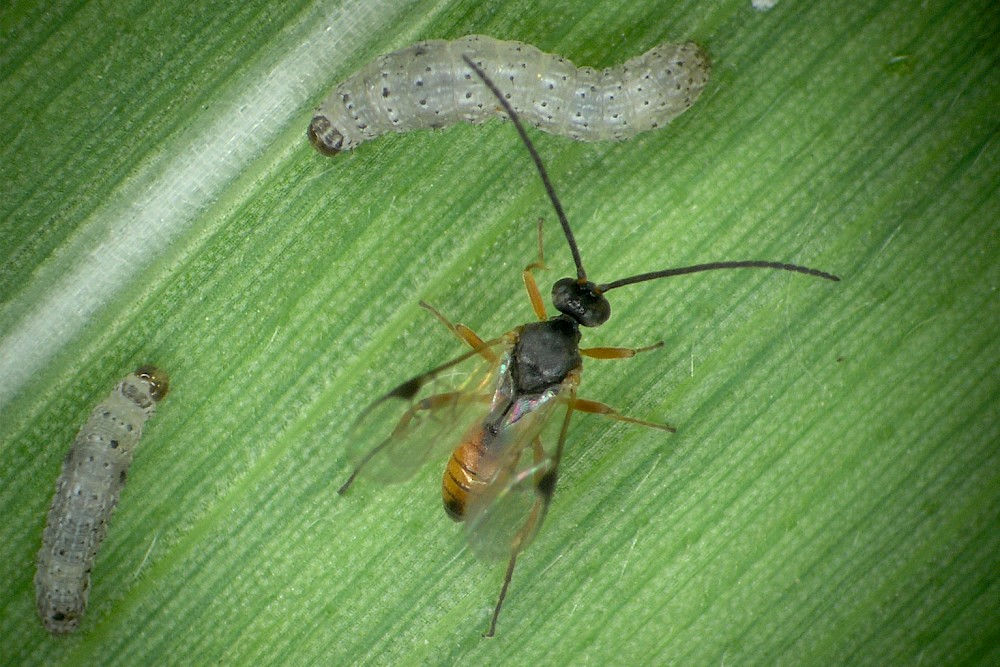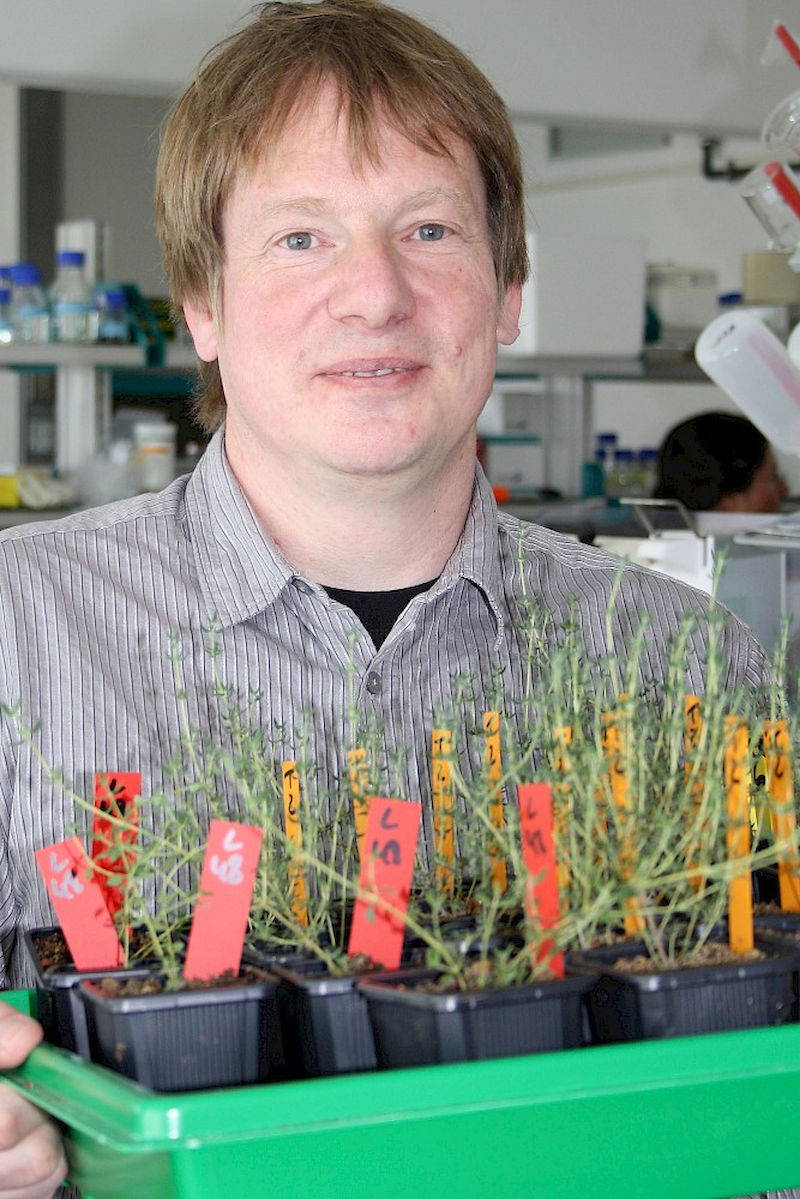Odour signals entice the enemy’s enemy

How does a corn plant react when the caterpillar of the Spodoptera littoralismoth starts eating one of its leaves? The plant becomes stressed and produces odours. A biological whodunit takes its course: The plant uses these odour signals to attract its enemy’s murderer, namely the parasitoid wasp Cotesia marginiventris. “The wasp quickly lays an egg on the caterpillar and a short time later, a freshly hatched larva eats the caterpillar from the inside out,” explains Jörg Degenhardt. But that’s not all: the corn plants also defend themselves against underground attacks. “This motto holds true: My enemy’s enemy is my friend,” says Degenhardt describing the creepy events.
If the larva of the corn rootworm Diabrotica virgifera starts nibbling away at its roots, the corn plant sends a signal substance (E)-beta-caryophyllene into the earth. Thread worms (nematodes) find this irresistible. They crawl in large troops towards the odour and descend on the larva. Scientists can prove this mode of operation using a olfactometer. The worms exposed to this move towards these odours which, by the way, can also by sensed by the human nose. “It smells slightly like jasmine tea,” explains the pharmacist.
A particular gene of the corn plant regulates the production of this attractant. During hundreds of years of cultivation, many corn varieties, particularly in North America, have lost this gene, making the plant susceptible to the corn rootworm. Crop losses through pest infestation amount to over one billion dollars a year. Preparing the corn seeds with insecticide is a controversial solution. Because the pest has been on the rise in Germany since 2008, the pesticide chlothianidin was used in Baden-Württemberg and Bavaria. This resulted in the poisoning 300 million honey bees. Dust contaminated by the insecticide settled on the flowers. “The bug’s natural predators are much more environmentally friendly,” states Degenhardt who himself is convinced.

His research team has succeeded in transferring the defence gene from the European corn varieties to the more sensitive US varieties with the help of the Technical University Munich. And indeed, these did subsequently produce the worm attractant. Together with scientists from the Max Planck Institute and Professor Bruce Hibbard from the United States Department of Agriculture (University of Missouri, USA) they could verify a 60% reduction in damage cause by corn rootworms in field studies of transgenic corn plants. Breeding can also produce plants in which the gene is again active.
Other exciting questions posed by the pharmaceutical biotechnology workgroup in Halle: Why do optically identical plants in natural populations produce different odours? The team is investigating this question using thyme which was collected at different locations in southern France. Which molecular and biochemical mechanisms play a role here? Sage, mint and oregano and their essential oils are also being more closely investigated in the lab. These oils are used in many pharmaceutical applications. Moreover they are used in cosmetics and as flavourings in foods.
The subproject (B7) in the collaborative research centre 648 “Molecular Mechanisms of Information Processing in Plants” of the German Research Foundation (spokeswoman: Leibniz Prize winner Ulla Bonas) is led by Jörg Degenhardt and investigates signal processing within plant cells when a fungi, bacterium or insect attacks. Entitled “The regulation of plant terpene biosynthesis through herbivores and pathogens”, the project hopes to better understand intracellular information processing in the area of plant defence.
Contact: Prof. Dr. Jörg Degenhardt
Institute of Pharmacy
Phone: 0345 5525100
Send an e-mail
